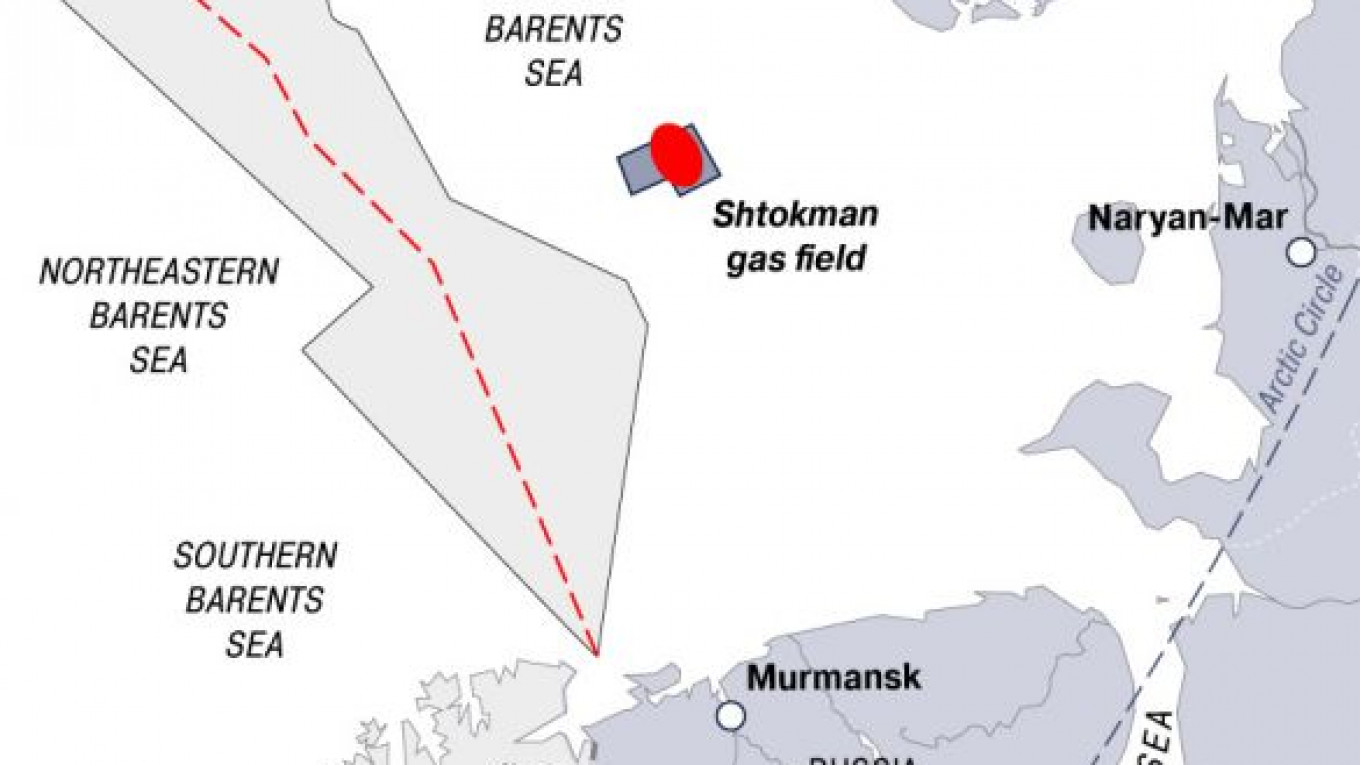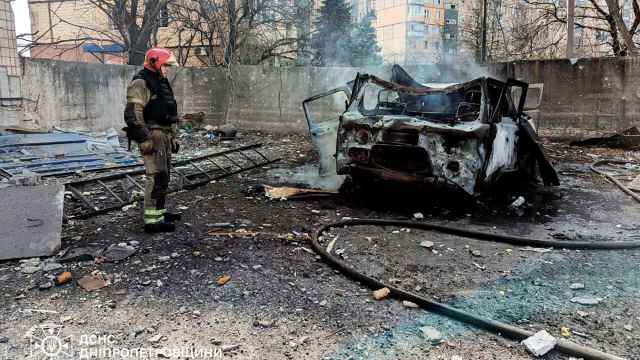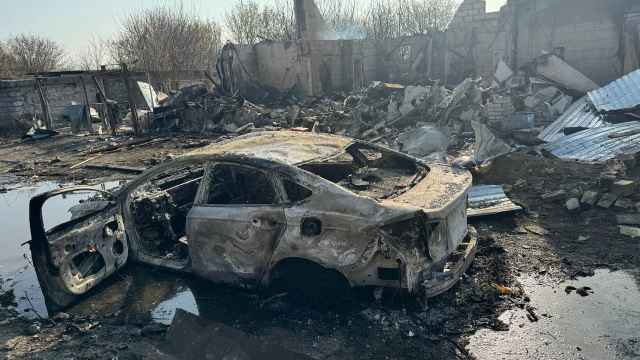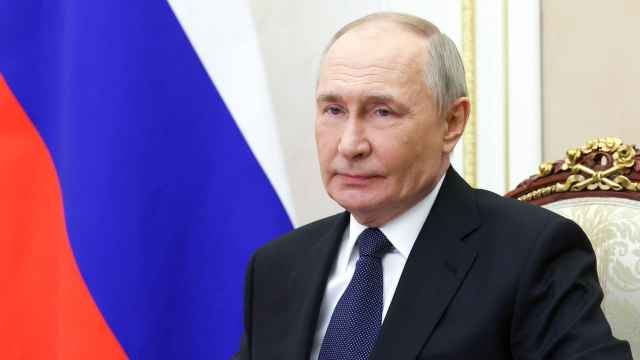A 44-year border dispute between Russia and Norway in the icy expanses of the Barents Sea was finally laid to rest Thursday as a new delineation treaty entered force.
The agreement opens up a previously untouched 175,000-square-kilometer area for exploration, estimated to contain up to 6.8 billion tons of oil and gas.
The resolution of political tensions in the so called "gray zone" was the result of years of work by the Russian and Norwegian governments and comes at a time when Arctic nations are increasingly looking to assert sovereignty over the region's abundant offshore mineral resources. The treaty, signed in September 2010, found a geographical mid-point between the demands of both sides.
World Petroleum Council vice president Anatoly Zolutukhin told The Moscow Times that the "gray zone," previously off-limits for surveying or drilling, is "a very prolific area — maybe even more prolific than Shtokman."
Gazprom operates Shtokman, the enormous gas field holding about 3.9 trillion cubic meters of gas in the Russian half of the Barents Sea, in collaboration with Norway's Statoil and France's Total. However, uncertain long-term demand for gas and technical difficulties have caused repeated postponements, and analysts said the new treaty might be a further delay if it proved to be a catalyst for indirect competition with Shtokman.
Defocusing on Shtokman?
Fifty-seven deputies in the Duma voted against the ratification of the delineation treaty in March on the grounds that it could harm Russian economic interests. Communist Party Deputy Leonid Kalashnikov said during the debate that it would "put a cross on the Shtokman field."
In particular, Norway's Statoil, 67 percent state-owned, could find accessible hydrocarbon deposits in home waters more appealing than its minority stake in the Russian-controlled ventures.
"If Norway explores and develops the [former] gray zone at an accelerated pace, Statoil's focus will be on this area and they might divert some funds and resources from [their] participation in … Russia's Arctic offshore," said Valery Nesterov, an oil and gas analyst at Troika Dialog.
A Statoil spokesman, Bard Gladpedersen, told The Moscow Times that the company remained "committed to the Shtokman project," but added that "it is very important and positive that this treaty has been signed and comes into force. … The Barents Sea is an attractive prospect for us."
Norwegian companies, faced with a fast rate of reserve depletion, have superior technical expertise that leads to a greater capacity for quick development, compared with their Russian counterparts. As such, they are likely to take the lead over Russian companies in exploiting the newly accessible areas.
More Significant for Norway
The former gray zone is a geographically larger area than the part of the oil and gas rich North Sea controlled by Norway, Leonid Surguchev, vice president for international business development at the Stavanger International Research Institute, said Wednesday on the sidelines of the Next Generation Oil and Gas Summit.
In a sign of their interest, the Norwegian government has fast-tracked some of the bureaucratic approval processes for the new areas, and the Oslo-based company Petroleum Geo-Services has already been contracted to conduct seismic surveys when the area is ice-free during the summer months of this year.
While analysts estimate that it could take 12 to 15 years for commercial production to begin in the newly delineated Russian sector, Surguchev said it would take Norway 4-7 years from the moment of a significant hydrocarbon discovery to start pumping the oil or gas.
Imminent seismic surveys will also go some way to addressing uncertainty over the exact quantity of oil and gas. Though official Russian estimates put the figure at 6.8 billion tons of oil equivalent in 10 unique blocks, U.S. figures are more conservative at 1.7 billion tons. The Barents Sea as a whole contains about 30 billion tons, about 25 percent of the world's offshore shelf hydrocarbon resources.
But the treaty may also be a catalyst for collaboration between Russian and Norwegian energy companies as, in the case of hydrocarbon reservoirs that extend across the border, companies will be subject to standardized agreements that stipulate the use of geophysical and drilling data to decide what proportion of the reserves each side is entitled to.
De-Facto Partnership
"Under the provisions of the agreement, any cross-border [hydrocarbon] structure should be regarded as a single unit — we are obliged to develop deposits as a unified whole. Therefore Statoil is, by definition, our partner," Natural Resources and Environment Minister Yury Trutnev said in September 2010, Finmarket.ru reported.
Gennady Shmal, president of the Union of Oil and Gas Producers of Russia, told The Moscow Times that Russian companies stood to gain significant technical expertise from collaboration with Norwegians in the Barents Sea.
The Maritime Delimitation and Cooperation in the Barents Sea and the Arctic Ocean treaty between Norway and Russia was signed during a ceremony attended by President Dmitry Medvedev and Norwegian Prime Minister Jens Stoltenberg in September 2010.
Prior to the signing, Norway had argued for the boundary to be at a midpoint between the two landmasses: Russia's Novaya Zemlya and Norway's Svalbard archipelago, respectively. Russia pushed for a "meridian line" that would have run directly north from the mainland.
The agreed borderline, a compromise between the positions, runs almost to the North Pole and was ratified by the Norwegian and Russian parliaments.
"The establishment of clear legal borders in an area where our interests intersect is, without question, a very real and a very important step forward," Medvedev said at a news conference with Stoltenberg after the 2010 signing.
A ban on imports of Norwegian salmon in 2006 by the Agriculture Ministry was widely seen as retaliation for the repeated detentions of Russian fishermen alleged to have trespassed onto disputed Norwegian territory.
One Treaty Leads to Another
A report compiled by the U.S. Geological Survey in 2008 said almost one-quarter of the undiscovered — but technically recoverable — hydrocarbons in the world may be located north of the Arctic Circle. The region is becoming more and more attractive for energy companies as global warming makes it increasingly ice-free and accessible for longer periods each year.
Russia is particularly keen to consolidate its grip on the Arctic in light of the projected decline in gas and crude oil output from existing fields. While Russia is the biggest producer of crude in the world, it has only 74.2 billion barrels of reserves compared with 264.6 billion barrels held by the world's second-biggest producer, Saudi Arabia.
Deputy Prime Minister Sergei Ivanov said Wednesday that Russia would formally submit an application to the United Nations in 2012 in another attempt to gain international recognition for its claim that the Lomonosov Ridge and its huge mineral resources is a part of its own Eurasian landmass — and does not belong to Canada or Denmark.
Troika analyst Nesterov said the new treaty in the Barents Sea might have been a geopolitical move by Russia to try and bring Norway onside in its bigger territorial claims.
It's a step to secure Norwegian support in the event of a progress regarding the division of the huge territory encompassed by the Polar circle, he said.
A Message from The Moscow Times:
Dear readers,
We are facing unprecedented challenges. Russia's Prosecutor General's Office has designated The Moscow Times as an "undesirable" organization, criminalizing our work and putting our staff at risk of prosecution. This follows our earlier unjust labeling as a "foreign agent."
These actions are direct attempts to silence independent journalism in Russia. The authorities claim our work "discredits the decisions of the Russian leadership." We see things differently: we strive to provide accurate, unbiased reporting on Russia.
We, the journalists of The Moscow Times, refuse to be silenced. But to continue our work, we need your help.
Your support, no matter how small, makes a world of difference. If you can, please support us monthly starting from just $2. It's quick to set up, and every contribution makes a significant impact.
By supporting The Moscow Times, you're defending open, independent journalism in the face of repression. Thank you for standing with us.
Remind me later.







